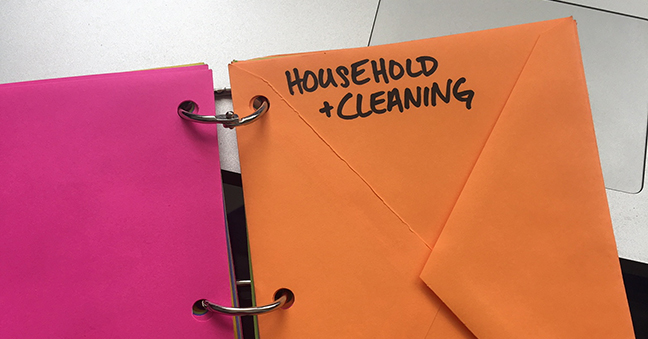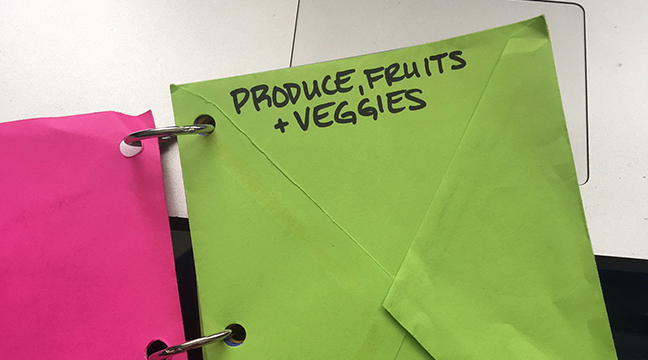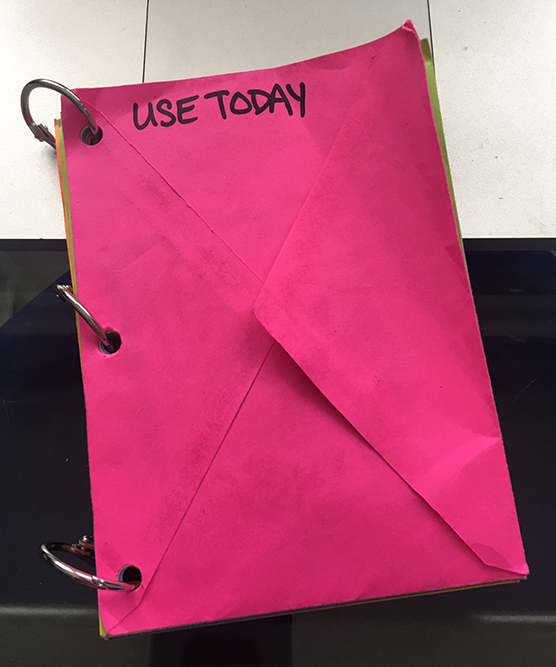How to Cut Your Grocery Budget For Beginners
We all need to eat, right? If you’re like most Americans, food is probably a large part of your family’s monthly budget. So, when you need to trim your household budget, how do you make cuts to the money spent on food? Do you cut how much you buy? Or would you rather cut how much you pay for that food and how much of that food is wasted? Here are a few tips that have worked for my family.

Cook at Home
Did you know that restaurant-delivered meals are five times more expensive than home-cooked meals? And while meal kit services are great, they are still three times more expensive than doing your own shopping and cooking from scratch.
Home-cooked meals are also healthier because you control the ingredients and the portion sizes. Forbes has a great article on the topic if you’d like to know more.
Buy In Quantity
I highly suggest joining a price club or warehouse store. Around here, we have Sam’s Club and Costco. Buying in bulk is always cheaper. I look for meats and produce that I can freeze. I’ll talk about that more in a minute.
Savings from buying food you eat a lot in bulk can really add up if you keep an eye on it. At one point in my life, I had four dogs. Big dogs. Labs and a lab mix. They ate a LOT of food. I purchased 100 lb. of dog food at a time from Sam’s Club.
Each year, Sam’s was nice enough to send out a statement of what I was saving on average by buying certain items in bulk. I couldn’t believe it when I saw that I was saving almost $600 a year on dog food. Six. Hundred. Dollars. That alone is worth the $45 price of the store membership.
Vacuum Sealing and Freezing
I cannot say enough how much I love my vacuum sealer. It’s so easy to use and has so many benefits. I vacuum seal all those meats I just bought at the price club before I freeze them.
Vacuum sealing does a lot of things for food, but my favorites are:
- Foods keep a lot longer in the freezer. Sealed meats can last 2-3 years in the freezer compared to six months for other meat storage methods. And no freezer burn.
- Less meat going bad means I am saving money on food waste.
- Vacuum sealed meats take up less space in my freezer. Like a lot less.
If you’d like to know more about the benefits of vacuum-sealing, I suggest you check out National Product Review’s 10 Benefits of Vacuum Sealing Food.
I also freeze a lot of fruits in our house. My daughter loves fruit, but sometimes it goes bad before we can eat the whole basket of blueberries. Berries are one of the easiest things to freeze. Blueberries, strawberries, raspberries… all of them.
Simply line a baking sheet with parchment paper. Spread berries* out in a single layer, not touching. Place the tray in the freezer for 2 hours. After that the berries will be individually frozen enough to transfer them to a plastic freezer bag for final storage.
* Blueberries and raspberries can be frozen as is, but for strawberries, I usually cut the tops off and then quarter them.
Frozen berries thaw quickly too. I put frozen berries in my daughter’s lunch box, and they are thawed by the time she eats them mid-day.
Coupons — Types, Doubling and BOGOs
When getting started with couponing, there are a few basics you’ll need to know. The savings you could get from couponing will become obvious once you know the basics.
First things first. There are three types of coupons: manufacturer, store and loyalty program promotions. It’s important to pay attention to what type of coupons you have.
Did you know you could possibly use one of each type of coupon for a single product? That’s three opportunities for money off one item!
For example, let’s say I need to buy contact solution at CVS. The kind I buy tends to run about $20 for two bottles.
I have a manufacturer coupon for $3.00 off. I also have a store coupon for $1.00 off. On top of that, I have a loyalty rewards coupon for $6.00 off.
So now, I’m only paying $10 for two bottles. That’s a savings of 50 percent.
Now imagine I used the same coupons when they are running a sale of two bottles for $18. Using the same coupons, I’m now getting two bottles for only $8.00. That’s a savings of 60 percent off the original price.
Imagine if you could save this much on all your shopping. How would your budget be impacted?
You can save even more if the store doubles or triples manufacturer coupons. Most stores in my area will double a coupon up to 50¢, but in some areas, they double up to $1.
If I have a 50¢ coupon, they will double it and give me $1 off. If the store triples coupons, they will give me $1.50 off. The doubling and tripling happens automatically at the register.
One of my favorite things to use coupons for is BOGOs (buy one get one). I got a year’s worth of laundry detergent for $40 once doing this.
Here’s the secret. With BOGOs, even though you are only paying for one item, the store sees you as purchasing two (one just happens to be free). Since there are two products, that means you can use two manufacturer coupons!
For example, my local store has a BOGO on Tide detergent. It’s $11.99 a bottle. Since it’s a BOGO, I’m really only paying $5.99 per bottle.
I have two manufacturer coupons both good for $2.00 on one bottle of detergent. With those, I’m only paying $3.99 per bottle. So far, I’m saving 67 percent per bottle!
If I have store coupons or loyalty reward promotions to add on top of that, there’s a good chance, I could get these two bottles of detergent for free!
If you want to take a deeper dive into couponing, I suggest you head over to www.thekrazycouponlady.com.
Store Coupon Policies
Just as not all stores double or triple, there could be other differences in your stores’ coupon policies.
Before you do any couponing, you’ll want to check the coupon policies of the stores you shop. It will help you plan accordingly and decide where you’ll get the most value from your coupons.
Coupon Resources
There are so many places to find coupons. I bet you get some in your mail every week.
You can find manufacturer coupons in newspapers, websites like Coupons.com, and apps for your favorite stores (like Target and CVS).
Store coupons can be found in aisle displays at the store or from coupon kiosks like the one I where I scan my shopper’s card at CVS.
Have you ever gotten a long receipt of coupons after you make a purchase at the store? Those are called Catalinas. They can be either manufacturer or store coupons. Sometimes they are loyalty promotions with dollars off your total purchase.
Organizing Your Coupons
I have tried so many things to organize my coupons. For a long time, I had a huge three ring binder with plastic protector pages in it. I used the kind that were divided into 9 little pockets, like my brother used for his baseball cards. It was a nice binder, but it was huge and cumbersome.
Then I tried an accordion file, but that didn’t suit me either. I had little book with pockets on each page, but the coupons could easily fall out in my purse.
So, I made my own. I knew I wanted to group my coupons by category. I wanted those categories ordered in the way I shopped through the store. I didn’t want the coupons to fall out of the organizer when I throw it in my purse.
Here’s what I made. I got a box of neon envelopes and a small pack of metal rings from an office supply store and voilà.
By far, my favorite category is “USE TODAY.” If I’m in a hurry and don’t have time to look at all my other coupons, I at least pull these out. These are usually store coupons for “$XX off your next purchase.”
I also keep any coupons that earn extra reward points here as those usually have a short expiration date.
Time to Get Started!
Learning how to save money on groceries and the food we eat is one of the easiest ways to trim your budget. Sound off in the comments about which tip and trick you are most excited to try first.




Awesome article post. Really looking forward to read more. Want more. Merridie Barris Hultgren
I like reading a post that can make men and women think. Lurleen Simone Andrej